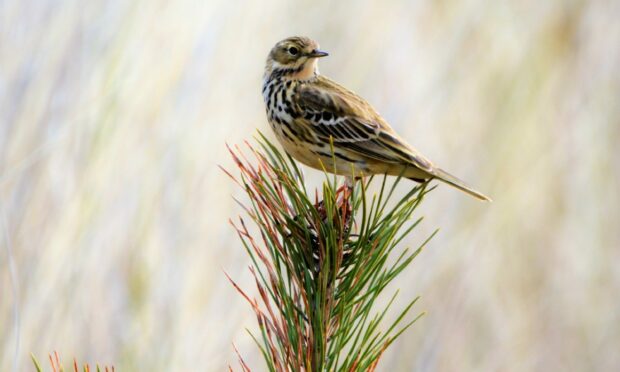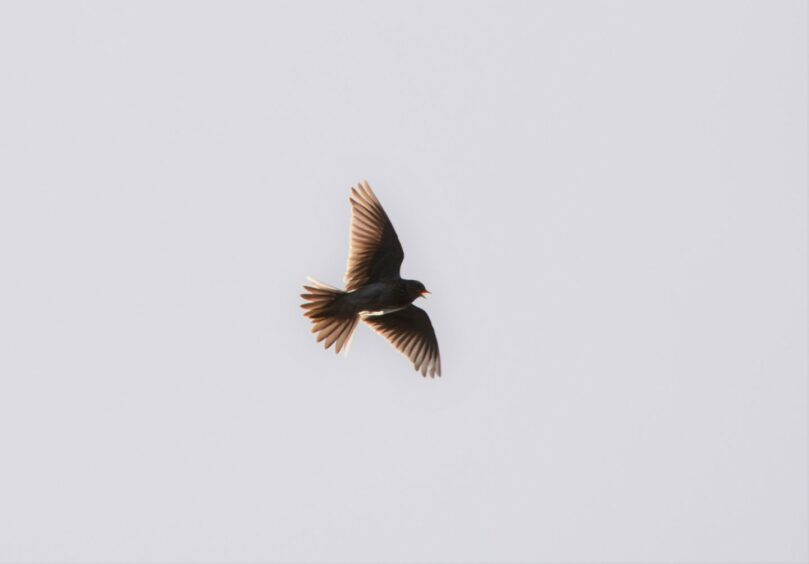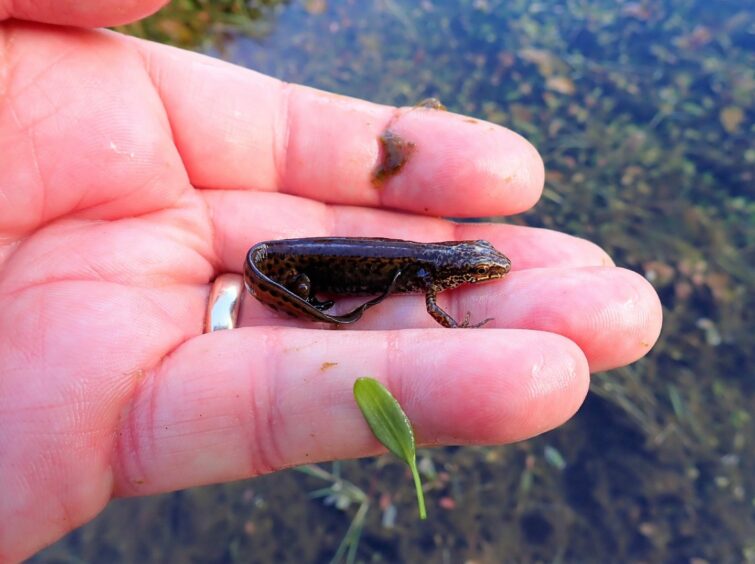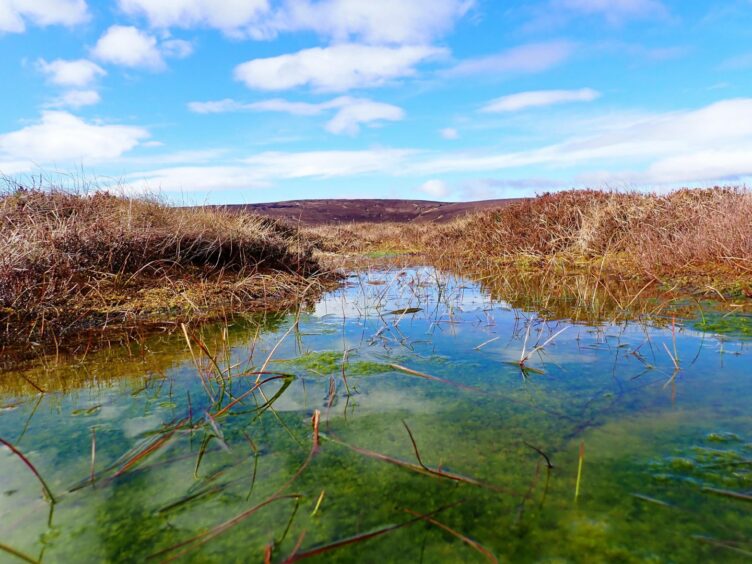The area around Glen Dye south of Banchory lies close to my heart, a vast sweeping expanse of hill, moor, woodland and tumbling burns where skylarks sing and buzzards soar.
With the sun shining warm and anticipation coursing through my veins, I embarked upon a circuit around Mount Shade and Clachnaben that took me to the vast heathery expanse of Airy Muir before descending into Glen Dye via the Hill of Edendocher.
Onto open moorland
As I worked my way up through woodland, a woodcock flushed-out from under my feet and with the accuracy of a guided missile flew unerringly through the wire-mesh gap of a deer fence, twisting and turning as it went.
Woodcocks have large, penetrating eyes, and I imagine its superb vision aided its pin-point trajectory.
I skirted around the imposing granite tor of Clachnaben and out onto open moorland.
To the north, the distinctive top of Bennachie etched the horizon.
The two tops and their proximity to the coast are a familiar landmark to fishermen, giving rise to the old couplet: ‘Clachnaben and Bennachie, Are twa landmarks frae the sea’.
Spiralling skylark
Above me, a skylark spiralled up into the air on quivering wings, raining forth his melodic song.
Shakespeare described the skylark as ‘the herald of the morn’ and as this one soared ever higher, his song was indeed an inspiring beckoning to the joys of a new day.
After hanging in the air for a while, he made a slow descent and disappeared in among a thick flush of heather.
Meadow pipits fluttered up into the air before me, excited by the onset of spring and eagerly seeking mates.
Their trilling song flights may not be as dramatic as that of the skylark, but they are still wonderful to watch as they ascend and float down on parachute wings.
Search for palmate newts
A green-fringed sphagnum pool brought me to a halt and I peered into its coppery depths in the hope of spotting palmate newts.
None could be seen, but I knew from experience that these upland pools are ecologically important, offering important breeding places for amphibians and a wide range of aquatic invertebrates.
Their upland nature means the water is cold and nutrient poor, and in many of these pools, it can take a couple of years for newt tadpoles to fully develop.
On my descent into Glen Dye, I stumbled upon another pool, which this time brimmed with life.
Pondweed prospered here, around which strings of toad spawn were entwined.
In among the weed, I detected the flickering tail of a palmate newt.
I scooped it out with cupped hands and admired the attractive orange tones along its spotted flanks, before gently placing it back into the water.
Scuttling beetles
On my return along the glen, several green tiger beetles scuttled across the path like emerald jewels, their vibrant bodies glistering in the sun.
Despite their attractive demeanour, green tiger beetles are ferocious mini predators that feed upon small insects.
They have an impressive turn of speed and are one of our fastest insects.







Conversation